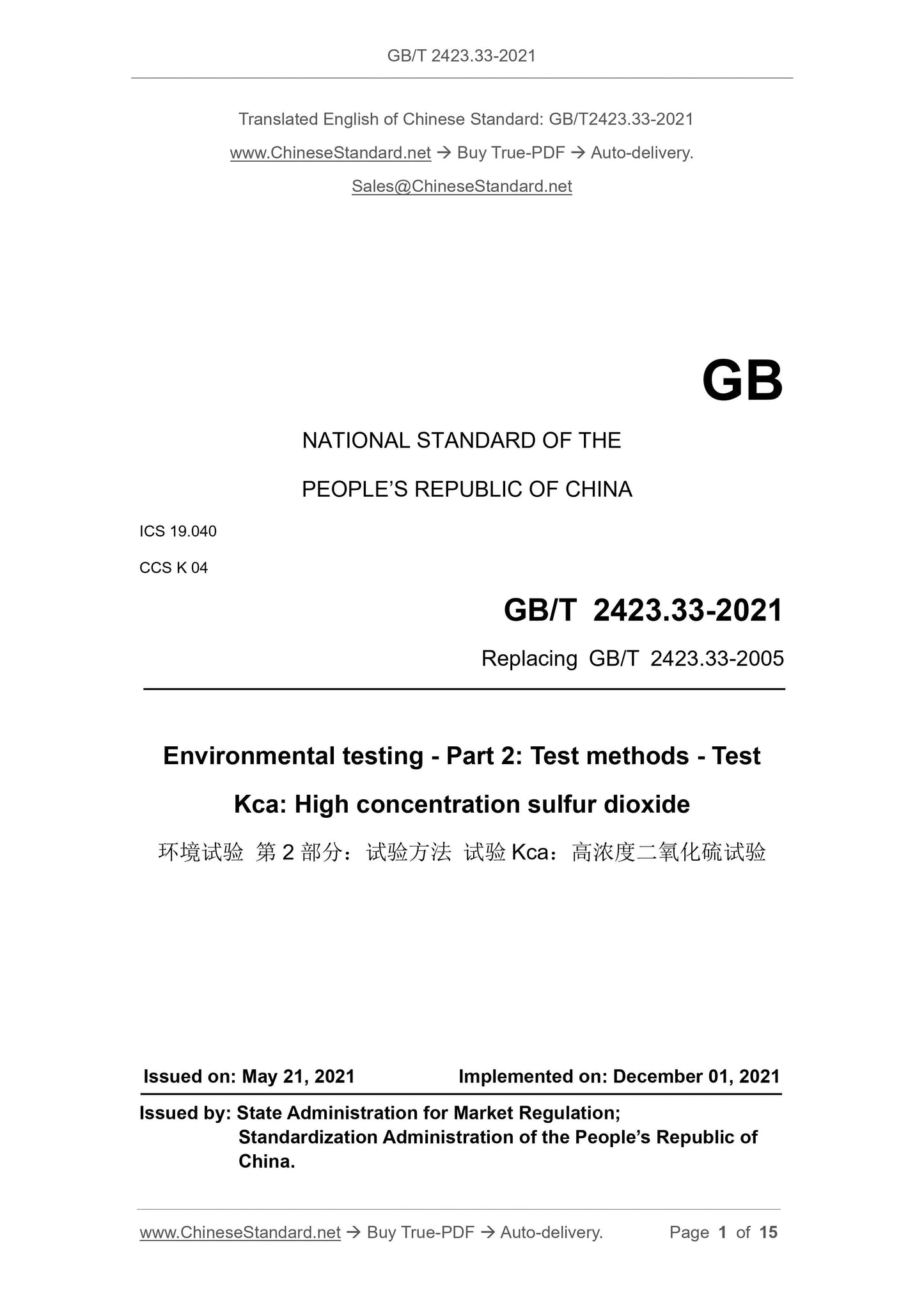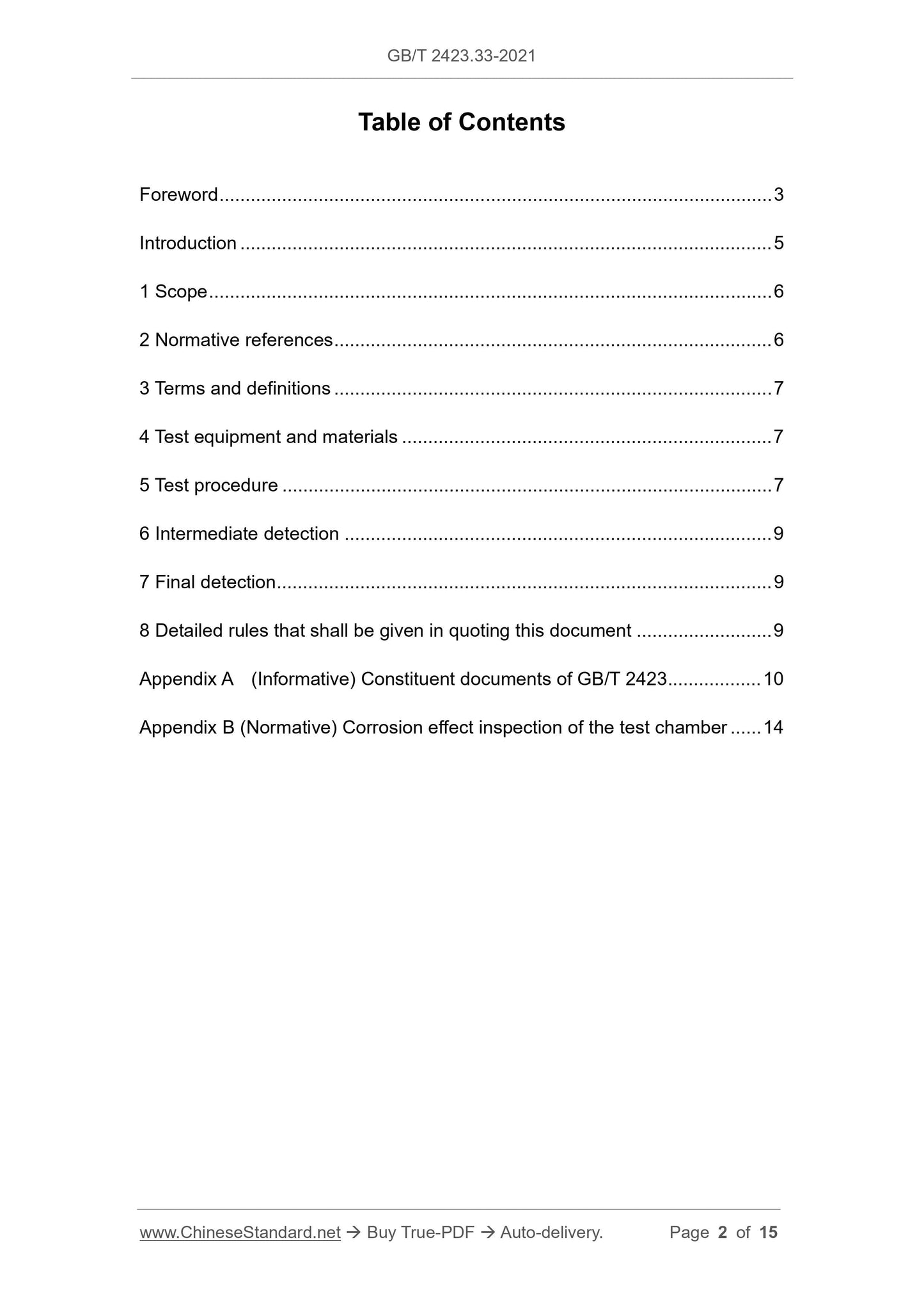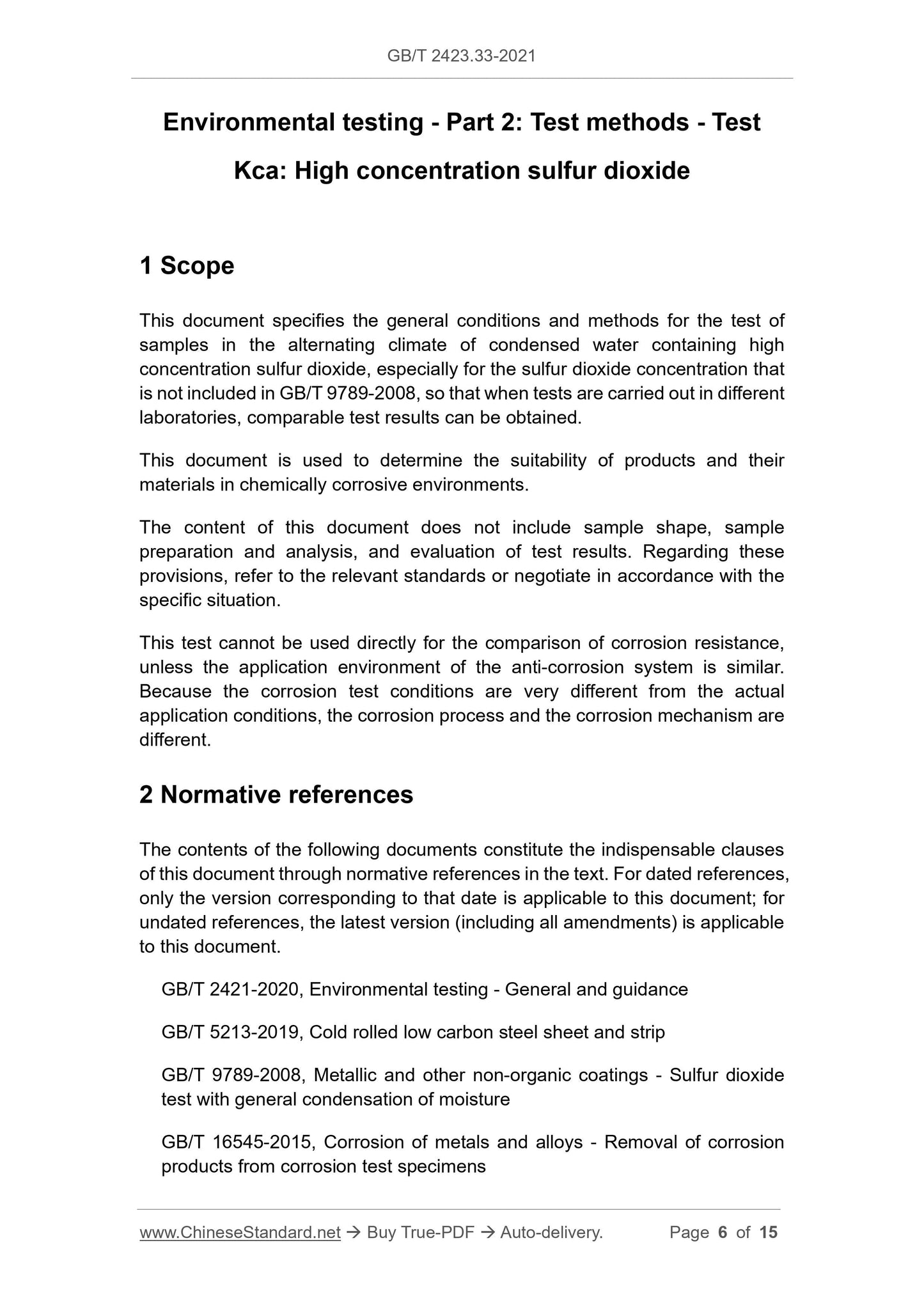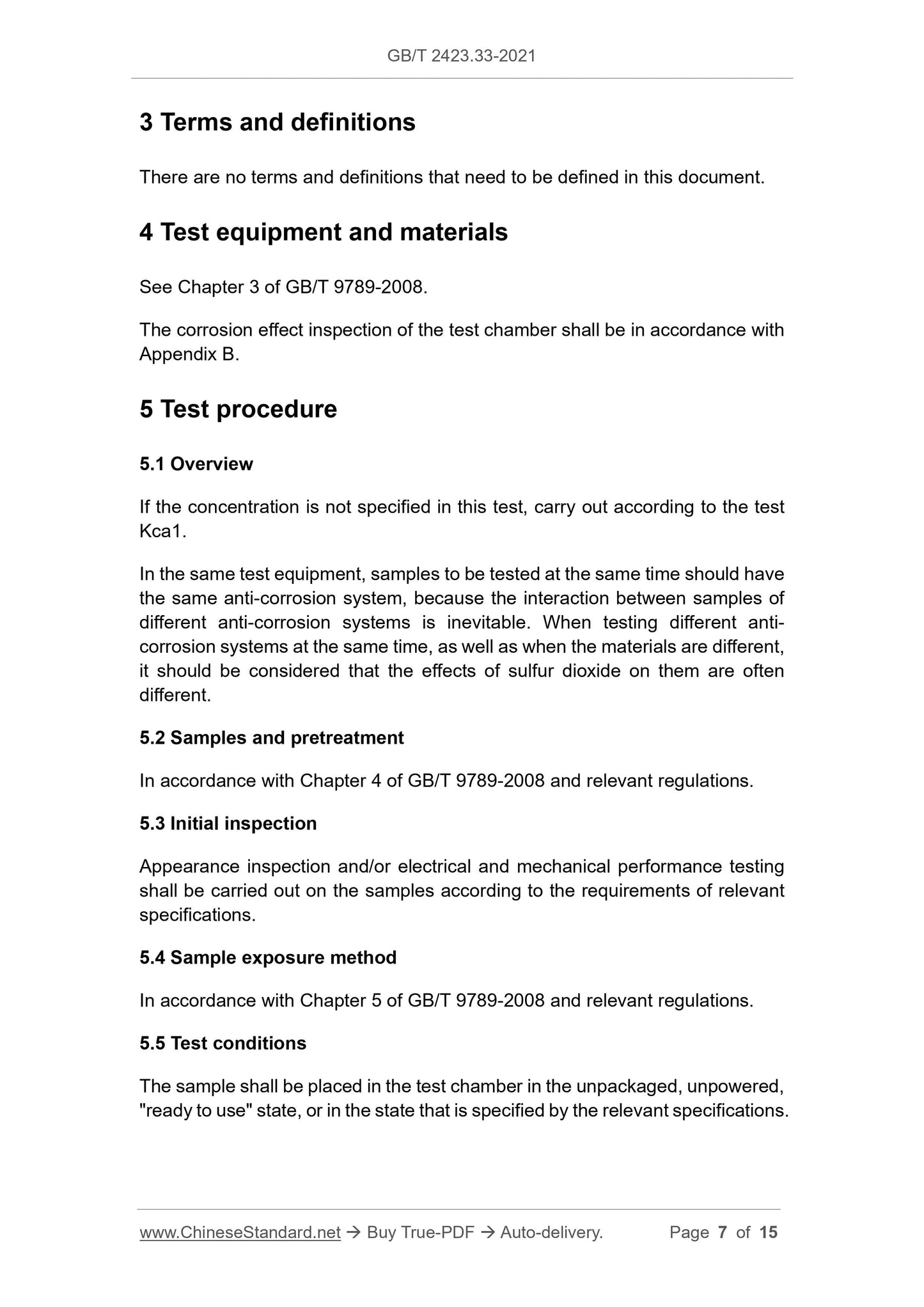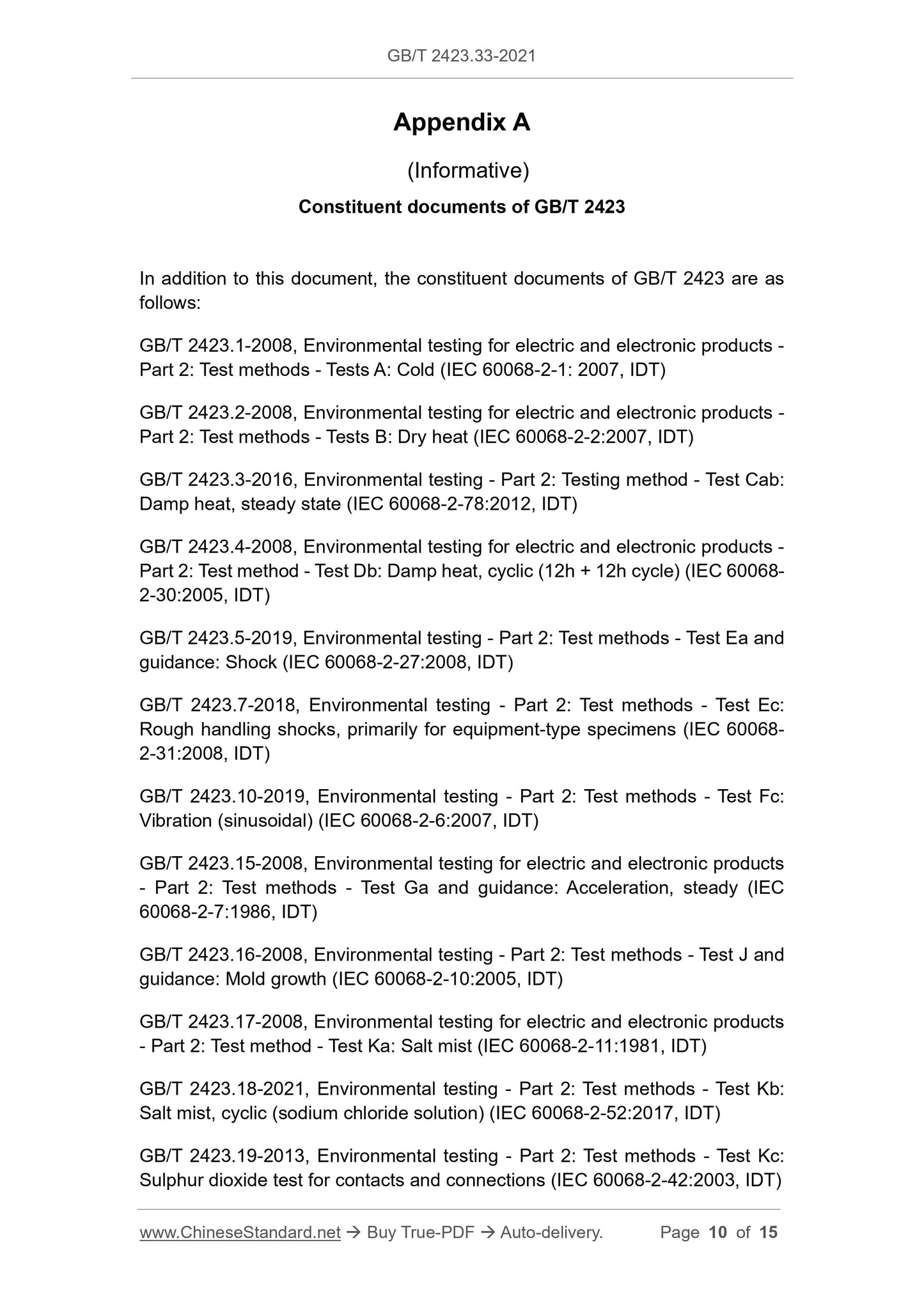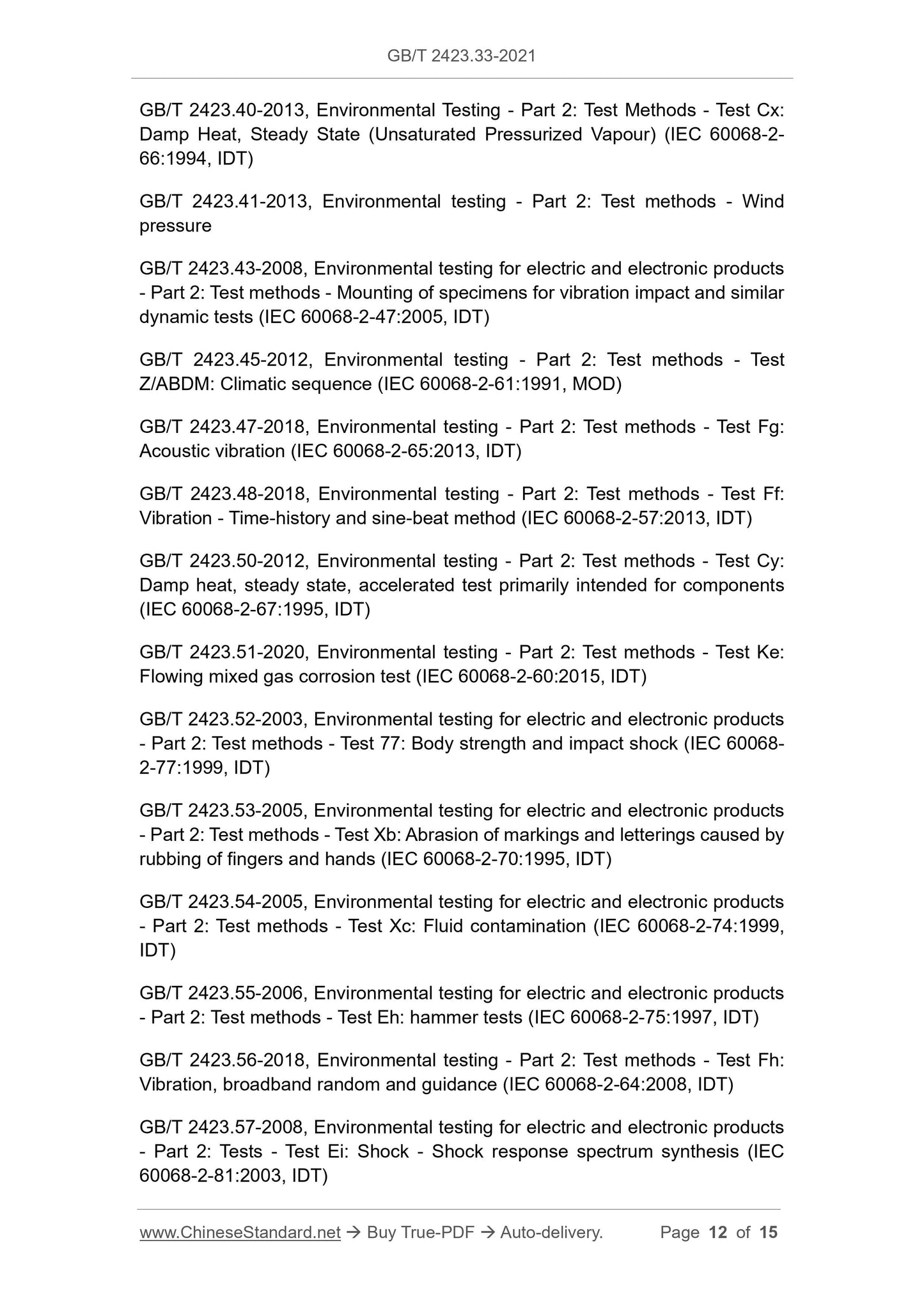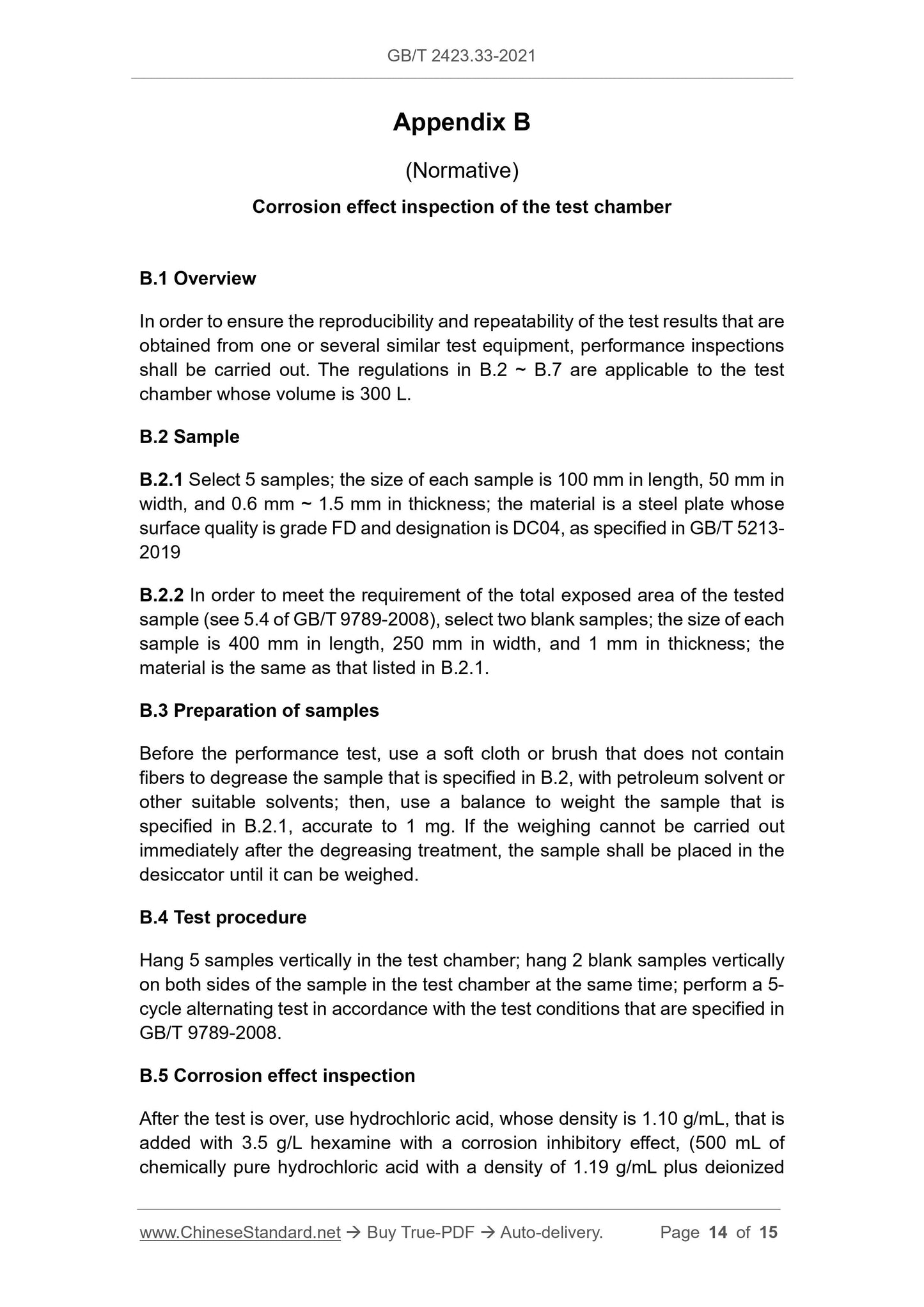1
/
of
7
www.ChineseStandard.us -- Field Test Asia Pte. Ltd.
GB/T 2423.33-2021 English PDF (GB/T2423.33-2021)
GB/T 2423.33-2021 English PDF (GB/T2423.33-2021)
Regular price
$175.00
Regular price
Sale price
$175.00
Unit price
/
per
Shipping calculated at checkout.
Couldn't load pickup availability
GB/T 2423.33-2021: Environmental testing - Part 2: Test methods - Test Kca: High concentration sulfur dioxide
Delivery: 9 seconds. Download (and Email) true-PDF + Invoice.Get Quotation: Click GB/T 2423.33-2021 (Self-service in 1-minute)
Newer / historical versions: GB/T 2423.33-2021
Preview True-PDF
Scope
This document specifies the general conditions and methods for the test ofsamples in the alternating climate of condensed water containing high
concentration sulfur dioxide, especially for the sulfur dioxide concentration that
is not included in GB/T 9789-2008, so that when tests are carried out in different
laboratories, comparable test results can be obtained.
This document is used to determine the suitability of products and their
materials in chemically corrosive environments.
The content of this document does not include sample shape, sample
preparation and analysis, and evaluation of test results. Regarding these
provisions, refer to the relevant standards or negotiate in accordance with the
specific situation.
This test cannot be used directly for the comparison of corrosion resistance,
unless the application environment of the anti-corrosion system is similar.
Because the corrosion test conditions are very different from the actual
application conditions, the corrosion process and the corrosion mechanism are
different.
Basic Data
| Standard ID | GB/T 2423.33-2021 (GB/T2423.33-2021) |
| Description (Translated English) | Environmental testing - Part 2: Test methods - Test Kca: High concentration sulfur dioxide |
| Sector / Industry | National Standard (Recommended) |
| Classification of Chinese Standard | K04 |
| Word Count Estimation | 10,192 |
| Issuing agency(ies) | State Administration for Market Regulation, China National Standardization Administration |
Share
